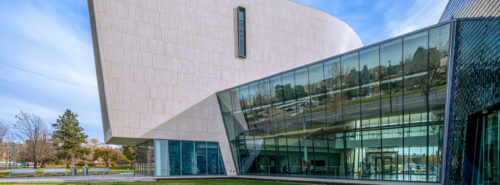The Internet of Things and the consulting-specifying engineer, part II: IoT issues and the standard process
IoT services, IoT communications and networking infrastructure, and IoT architectures are collectively trying to analyze technology gap in order to pinpoint where additional technology is needed to provide end-to-end IoT standardization solutions.
In my first article on “The Internet of Things and the Consulting-Specifying Engineer,” I explained the Internet of Things (IoT)—at least in concept—and how the consulting-specifying engineer’s work might be affected by it, or even intimately connected to it.
In this article, I’d like to address the IoT’s potentially far-reaching implications for scale, cost, and energy efficiency—all factors that engineers already address, but on a new and perhaps previously unimagined level. And I’d like to provide more detail on the current IoT-related standards work taking place under the aegis of the IEEE Standards Association.
First, let’s tackle scale, cost, and energy efficiency. These factors sound familiar, but take on new meaning as the IoT’s scale becomes clearer. I used the example of smart buildings in my first piece, so let’s take that several steps further for a building that is connected to the IoT, or perhaps remains unconnected as a standalone entity relying on an Intranet of Things.
Scale, obviously, has huge implications for cost, energy efficiency, and networking. If sensors are to be truly pervasive, they must be cheap and energy-efficient. If a network must tie together thousands, millions, billions, or even trillions of nodes, its architecture must be both scalable and energy-efficient.
IoT is all about scale. Its scale is likely to exceed the existing Internet by orders of magnitude. Some say that the Internet became IoT when the number of things connected to it exceeded the number of people. If 10 billion people connect their “things” to an IoT network, and we add up all those “things”—homes, cars, cell phones, computers, every functional item in their world—we enter new territory. Even a smart building equipped with an optimal number of sensors, actuators, systems, and networks for efficient operations and maintenance will present new design and construction challenges.
I mention this because, as the design, construction, operations, and maintenance for new buildings are considered, it requires a robust imagination to conceive of the potentially large number of sensing, monitoring, and control elements—not to mention the network, the computing capacity, and the energy needed to run an optimal system.
With the power of integrated circuits (chips) rising, as size and cost fall, some processing (i.e., intelligence) may be embedded with the sensor to speed computations and lessen the load on data networks and central processing. When and where will distributed intelligence aid the system, and when should central processing be applied? Should those sensors and processors communicate with the building’s network over wired or wireless connections? Which would be cheaper, faster, and more efficient? While these specific questions may be best directed to information technology and communications technology specialists on a project team, the engineering consultant may need to be aware of the issues and the implications for their work.
A closely related matter is how distributed sensors and processors are powered. Energy efficiency is a must, while plugging every sensor and processor into the electric grid is impractical. Thus, alternatives must be considered and engineered into the “things”: the hardware, systems, and even materials that go into a building. We need to consider sensors that will be battery-powered, RF-powered, light-powered, or even powered from harvesting excess energy from HVAC or other building processes.
IoT standardization solutions
So far, we cannot fully answer the engineer’s most pressing questions because the foundations for IoT remain in flux. Yet work on the foundations is currently under way at the IEEE Standards Association.
I mentioned in my first article that the IEEE Standards Association has projects focused on a proposed standard, IEEE P2413, “Standard for an Architectural Framework for Internet of Things.” The IEEE Communications Society also has groups working on IoT services, IoT communications and networking infrastructure, and IoT architectures. These groups are collectively trying to do technology-gap analysis to pinpoint where additional technology is needed to provide end-to-end IoT standardization solutions.
How will a smart building connect with external infrastructure? The IEEE 2030 Smart Grid series addresses the interoperability of energy technology and IT operations with the electric grid. How will workers in a smart building connect to the corporate network? The IEEE 802.11 series addresses wireless local area networks (WLANs) and IEEE 1901 addresses broadband over power lines. What about smart homes? The IEEE 1905 series provides a basis for convergent digital home networking for heterogeneous technologies. How will sensors and actuators work together? The IEEE 21451 series on communications for sensors, actuators, and devices is designed to address security, scalability, and interoperability. So, through the IEEE Standards Association, we’re currently accomplishing much of the groundwork needed to build IoT.
By monitoring this process, engineers can stay abreast of the IoT fundamentals that may well reshape their professional landscape in coming years. Participating, of course, provides an opportunity to shape the future.
Robert S. Fish, PhD, is vice president, Standards Activities, IEEE Communications Society; member-at-large, IEEE Standards Association Board of Governors; and president, Netovations, LLC.
Do you have experience and expertise with the topics mentioned in this content? You should consider contributing to our CFE Media editorial team and getting the recognition you and your company deserve. Click here to start this process.





